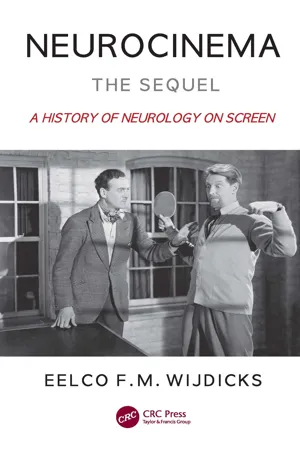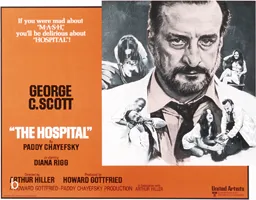
- 235 pages
- English
- ePUB (mobile friendly)
- Available on iOS & Android
About this book
The history of neurology as seen through the lens of the filmmaker is fascinating and extraordinary. Neurocinema-The Sequel is a review of the history of neurology as seen in film, starting with the early days of cinema and concluding with contemporary films now available in theaters and on streaming sites. The major themes of this book encompass how neurology has been represented in the history of cinema and how neurologic topics emerged and then disappeared, with some staging a comeback in more recent films. 180 films are assessed and rated, and many of these are exemplary depictions of neurological disorders. The author examines whether film, from a neurologic perspective, can provide insight and even debate. Each of the films discussed in this book demands serious attention by those who see and manage neurologic patients and support their families. Neurocinema - The Sequel chronicles this archive of neurologic representation, drawing readers in a rich collection of cinematic wonders of permanent cultural and historical value.
Frequently asked questions
- Essential is ideal for learners and professionals who enjoy exploring a wide range of subjects. Access the Essential Library with 800,000+ trusted titles and best-sellers across business, personal growth, and the humanities. Includes unlimited reading time and Standard Read Aloud voice.
- Complete: Perfect for advanced learners and researchers needing full, unrestricted access. Unlock 1.4M+ books across hundreds of subjects, including academic and specialized titles. The Complete Plan also includes advanced features like Premium Read Aloud and Research Assistant.
Please note we cannot support devices running on iOS 13 and Android 7 or earlier. Learn more about using the app.
Information
1Introducing the History of Medicine in Film
Cinema is a great way to explain the past.Martin Scorsese (2012)1
Portrayal of Hospitals: From Caring Nursing Sisters to Dilapidation and Disarray


Table of contents
- Cover Page
- Half-Title Page
- Title Page
- Copyright Page
- Dedication Page
- Contents
- Preface to Neurocinema—The Sequel
- Preface to Neurocinema
- Acknowledgments
- Neurocinema Collection
- Author Biography
- 1 Introducing the History of Medicine in Film
- 2 Introducing the History of Neurology in Film
- 3 The Neurologist in Film
- 4 The Neurologic Disorders in Film
- 5 Neuroethics in Film
- 6 Neurology in Documentaries
- 7 Neurocelebrities in Film
- 8 Neuropsychiatry in Film
- 9 Neurofollies in Film
- 10 Come and See: What to Get Out of Neurocinema
- Appendix: Neurofilmography
- Index